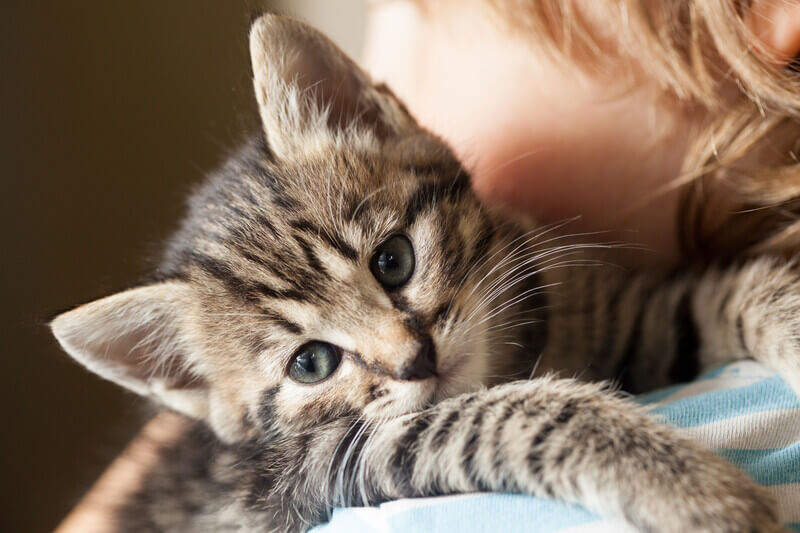A new furry friend can live in harmony as long as their behaviors and environment are properly managed. Here are four tips to successfully integrate a new pet into your home.
1: Find a pet with a compatible personality
When deciding to bring a new pet into your household, try to match your new pet’s personality to your current pet’s. For example, if you own a skittish cat, then taking in an energetic and playful big dog may not be the best option. If you are adopting from a shelter, talk to staff members to get an idea of a potential pet’s personality. You can also try to adopt a pet that has a history living with other animals.
2: Establish separate environments for your pets
To prevent your current pet from feeling territorial or your new pet feeling overwhelmed, give them each their own space. In the early stages, keep their toys, beds, food, and water bowls separate as well. This will help avoid any fights or possessiveness.
Pet or baby gates can be used to separate areas of your home and keep pets from interacting until you are ready. Once your new pet is comfortable in his new space, it is time to introduce him to your current pet.
3: Supervise early interactions
For the first few interactions, put a leash on dogs and give cats an easy way to leave. Choose a neutral location such as your yard or living room. Aim to keep introduction sessions short and calm, and have treats readily available to reward your pet’s relaxed behavior.
When you bring your pets together, be prepared for them to be scared, unsure, excited, or playful. If you have a dog, he may bark or whine at the new pet. This is normal, and shouldn’t be discouraged. By remaining happy and encouraging, you can help your pets feel comfortable accepting each other and foster a positive environment.
If your furry friends don’t get along right away, don’t panic. It can take time for them to adjust. Try to let them interact without interfering, and end the session on a positive note.
4: Watch out for signs of negative behavior
It is natural for your pet to be curious or excited about a new friend, but keep an eye out for these signs of possessiveness or aggression:
- Fighting over toys, treats, or food
- Overly excited
- Scratching
- Growling
- Hunched back
- Raised fur
- Excessive staring
If you notice these signs, distract or separate your pets. You can use treats or toys to lure them away from each other. Reach out to your vet for treat recommendations to use for training.
Be sure to keep your pets apart when you can’t keep an eye on their early interactions. Once your pets have been successfully around each other with no negative interactions, then it’s time to try unsupervised interactions.
5: Give your pets lots of love
Now that your pets are getting along and able to interact without your watchful eye, it’s time to show them love. Work on bonding with your new pet while still giving plenty of attention to your current pet.
If your current pet follows a routine for walks or feeding, try your best not to disrupt it. Pets thrive in structured environments, and your current pet will thank you for sticking to old habits. Incorporating your new pet into your routine will also help them adapt to their home and family members.



